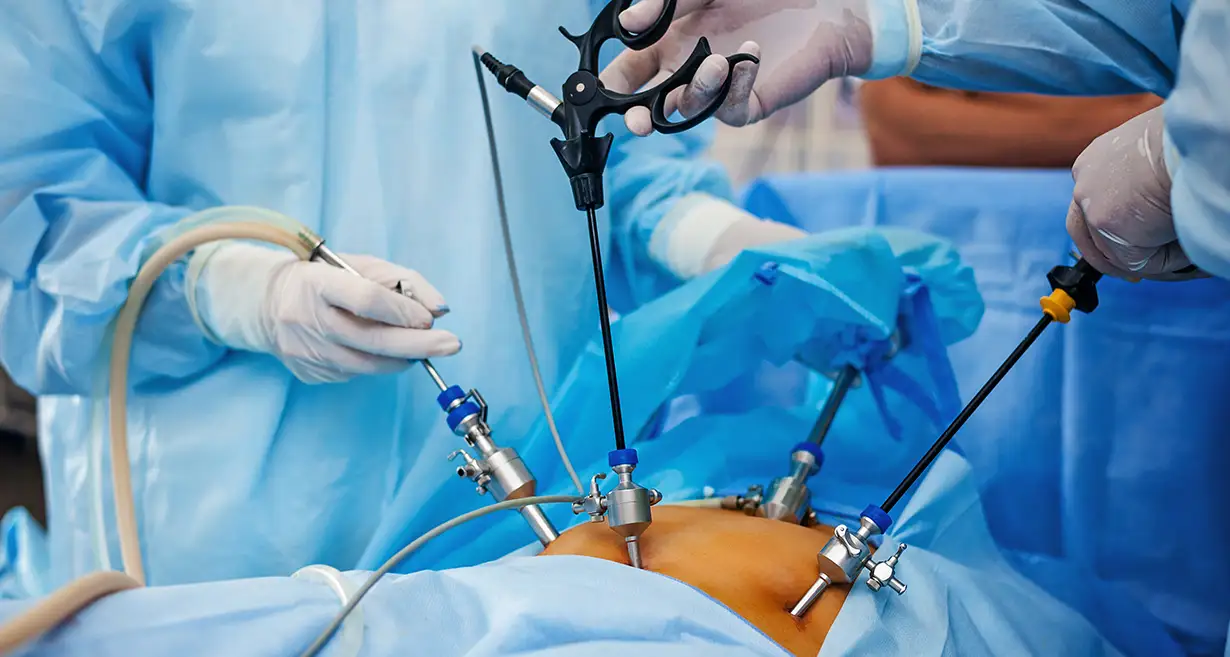
Laparoscopy
Laparoscopy is a type of diagnostic surgical procedure that your healthcare provider can use to look inside your body at your abdominal and reproductive organs. This procedure can also be used to collect samples of tissue (biopsies) for testing. A laparoscope — a thin tube similar to a telescope — is passed through a small incision (cut) in your abdomen. Using the laparoscope, your provider can look directly at the outside of your:
- Uterus.
- Ovaries.
- Fallopian tubes.
- Liver.
- Pancreas.
- Gallbladder.
- Spleen.
- Stomach.
Your provider might recommend a laparoscopy if other diagnostic tests, such as ultrasound and X-ray, can’t confirm the cause of your condition. Your provider might use laparoscopy to:
- Find the cause of pain in the pelvic and abdominal regions.
- Examine a tissue mass.
- Confirm endometriosis or pelvic inflammatory disease.
- Look for blockage of the fallopian tubes or for other causes of infertility.
Please follow these guidelines before coming to the hospital for your laparoscopy:
- Do not eat, drink (including water) or smoke after midnight the day before your surgery.
- Wear low-heeled shoes the day of surgery. You might be drowsy from the anesthesia and unsteady on your feet.
- Do not wear jewelry. (Wedding rings may be worn.)
- Wear loose-fitting clothing. You will have some abdominal tenderness and cramping after surgery.
- Remove any nail polish before surgery.
Your healthcare provider might need to do a few tests and gather some medical information about your health before your laparoscopy. This information can include:
- Previous X-rays from another facility.
- Film reports.
- Lab work.
- Operative report.
- Pathology report.
- Cytology slides.
- Tissue specimens.
Your healthcare provider may also order additional tests, including:
- Ultrasound.
- Computed tomography (CT).
- Magnetic resonance imaging (MRI).
A laparoscopy is done while you’re lying down in a slightly tilted position, with your head lower than your feet. You’ll be given a general anesthetic to relax your muscles and prevent pain during surgery.
Next, a small incision is made near the navel. The laparoscope is inserted through this incision. Your abdomen is inflated to make the organs easier to view. The laparoscope might also be equipped with surgical devices for taking tissue samples or removing scar tissue.
Your provider might also make a second incision at the pubic hairline. This incision provides an additional opening for instruments needed for completing minor surgical procedures.
After surgery, you’ll usually stay in a recovery room for about one hour. Then you will be taken to an outpatient surgery unit for continued observation.
You will be discharged after you receive instructions for your home recovery. In most cases, you can leave the hospital about four hours after laparoscopy. It’s rare that a patient will need to stay in the hospital overnight after this procedure.
You’ll be asked to return to your healthcare provider’s office for follow-up appointments within two to eight weeks of your laparoscopy. Please confirm your follow-up appointment schedule with your provider before leaving the hospital.
One important thing to note before going in for surgery is that you won’t be able to drive for 24 hours after surgery. Make sure you have someone available to pick you and stay with you for those first 24 hours.
